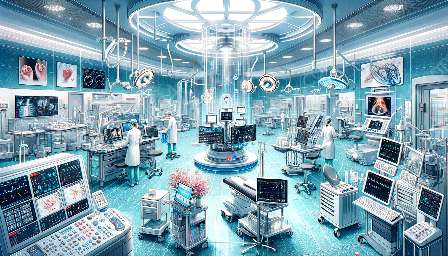Diagnostic imaging plays a crucial role in the field of modern healthcare, impacting medical devices and drawing from a wealth of medical literature & resources. This comprehensive topic cluster explores the fascinating world of diagnostic imaging, its significance, and its close relationship with medical devices and technical advancements. It delves into the various imaging technologies, their applications, and their profound impact on the quality of patient care.
The Evolution of Diagnostic Imaging
Diagnostic imaging has undergone significant advancements over the past few decades. From the early X-ray technology to the cutting-edge magnetic resonance imaging (MRI) and computed tomography (CT) scans, the evolution of diagnostic imaging has revolutionized medical diagnosis and treatment planning.
Types of Diagnostic Imaging Techniques
There are several types of diagnostic imaging techniques used in modern healthcare. These include:
- X-ray Imaging: This traditional imaging technique uses ionizing radiation to produce images of the inside of the body.
- Computed Tomography (CT) Scans: CT scans use X-rays to create detailed cross-sectional images of the body.
- Magnetic Resonance Imaging (MRI): MRI scans utilize strong magnetic fields and radio waves to generate detailed images of the body's internal structures.
- Ultrasound Imaging: Ultrasound imaging uses high-frequency sound waves to create images of internal body structures.
- Positron Emission Tomography (PET) Imaging: PET scans involve the use of a radioactive substance to create detailed images of the body's functional processes.
Impact of Diagnostic Imaging on Medical Devices
Diagnostic imaging has significantly influenced the development and advancement of medical devices. From the software used to analyze and interpret imaging results to the hardware that captures and produces the images, medical devices play a crucial role in diagnostic imaging. The integration of imaging technologies with medical devices has led to the creation of innovative tools that enhance the accuracy and efficacy of diagnoses and treatments.
Role of Medical Literature & Resources in Diagnostic Imaging
Medical literature and resources play a pivotal role in shaping the landscape of diagnostic imaging. Research studies, peer-reviewed journals, and academic resources provide invaluable insights into the latest developments, best practices, and emerging trends within the field of diagnostic imaging. Healthcare professionals rely on medical literature and resources to stay updated with the continuously evolving diagnostic imaging technologies and practices.
Challenges and Future Trends
While diagnostic imaging has advanced significantly, it is not without its challenges. Issues such as radiation exposure, image quality, and accessibility to imaging technologies in underserved areas remain concerns within the healthcare industry. However, ongoing research and technological advancements continue to address these challenges, paving the way for the future of diagnostic imaging.
In the coming years, we can expect to see further integration of artificial intelligence (AI) and machine learning algorithms in diagnostic imaging, enabling more accurate and efficient interpretation of medical images. Additionally, the development of novel imaging modalities and improved imaging techniques will continue to enhance diagnostic capabilities, leading to improved patient outcomes and personalized healthcare.
Conclusion
Diagnostic imaging stands as a cornerstone of modern healthcare, with its impact reaching across medical devices, literature, and the forefront of technological advancements. The continuous evolution of imaging technologies and their integration with medical devices underscores the critical role of diagnostic imaging in providing superior healthcare solutions. As we look towards the future, the intersection of diagnostic imaging, medical devices, and medical literature promises to drive innovation, improve patient care, and shape the landscape of healthcare for years to come.


